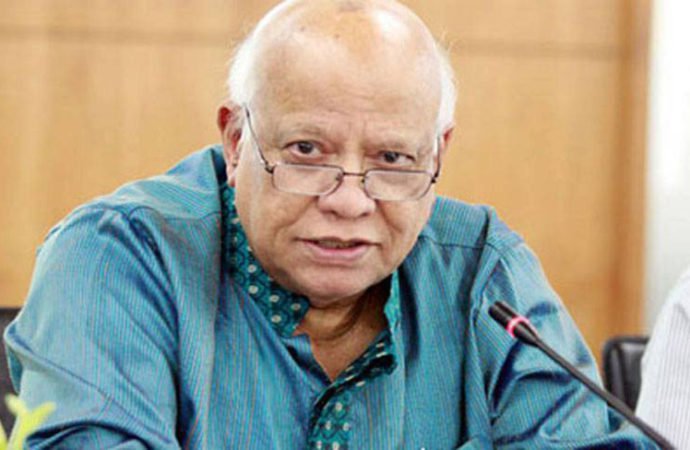
Banks are increasingly focusing on retail customers as more and more people are coming under the formal banking channel, a banker said.
The retail banking is providing exciting business opportunities to banks which have largely concentrated on the corporate clients, said Nazeem A Choudhury, head of consumer banking at Eastern Bank.
The nature of retail banking is changing every day, he said. “I believe in the next 10 years the change will be even more exciting.”
In the past, banks were not much enthusiastic about consumer banking. But the retail banking segment has been changing rapidly over the decade.
Banks are now more focused on retail and small business spaces, churning out new products, innovative services and customer engagements, he said.
Banks should not only lend funds to the corporate clients, they need to empower the consumers also, he said. “We need to focus equally on the two areas.”
Eastern Bank has rolled out at least 50 new products in the last one decade. It launches five new products every year.
Recently, EBL won the Best Retail Bank of Bangladesh title at Singapore-based The Asian Banker's Excellence in Retail Financial Services Awards for the fifth consecutive year.
The award has been given to EBL in recognition of the bank's solid growth, adoption of technology and a strong customer-centric strategy.
Choudhury attributes the feat to the adaptive and responsive nature of the consumer banking team of the bank.
“Winning any award is a statement of the good work someone is doing. And when you get it repeatedly, it means you have been able to benchmark your standards and uphold the commitment you have made towards your customers.”
But rather than being carried away, the bank is now stepping up efforts not only to retain its position but also to offer diversified products and services to the retail banking clients.
The bank has ventured into new service concepts like priority banking, banking centres for women and students, card-based corporate payment solutions, mobile app for banking services and various lifestyle enhancement programmes.
“EBL is largely a retail banking focused bank and has invested a lot in digital space in recent years. This year, the bank has brought in small business under the retail banking category,” said Choudhury.
The bank is working to launch agent banking and mobile banking in the coming months.
EBL now has over 500,000 customers. And Choudhury said the bank's focus is not to grow large on customers' numbers. “Rather, we want to keep the number steady – but we want to grow on their transaction and service level.”
“Whoever becomes EBL's customer – they should make EBL as their primary bank of choice for all of their banking needs – this is our retail banking aspiration.”
Choudhury said as the banking has become system and technology-based, interpersonal skills have become a critical factor for a bank to be a good one, particularly in the retail banking segment.
Interpersonal skills include how one deals with customers, sources business and deliver services within the shortest possible time, he said.
EBL regularly organises trainings on interpersonal skills, motivation and behavioural training to develop the soft skills of its employees, according to Choudhury.
“The bank is not that large when it comes to the number of branches or customers. But when it comes to profitability, efficiency and market reputation, EBL is one of the top private banks in the country.”
He said the banking sector has failed to keep pace with the growth of the population of the country; only 20-30 percent people have access to formal banking services.
“The rest has remained out of the formal financial service, which has brought about the idea of financial inclusion. Both the central bank and banks are working on the issue.”
Instead of working independently, banking and mobile banking should work together to take financial services to the masses, according to Choudhury.
The banker lauded the central bank's role for the growth of retail banking.
To verify a customer's authenticity and creditworthiness, the banking sector stands on a strong footing thanks to the access to the central bank's Credit Information Bureau and the Election Commission's national ID database.
“Thanks to these accesses, the non-performing loans will gradually go down,” he said.
NPL always stands at low level in case of consumer banking, and it stood at below 1 percent last year for Eastern Bank, he said.
Service holders form the client base of the retail banking at the bank. The interest rate on personal loans stands at around 11 percent at the bank, Choudhury said.
Industry-wide, the retail banking sector is growing at 20 percent annually on an average.
The bank is hiring more and more women as employees to serve the growing army of female women clients. At present, 20 percent of the bank's staff is female.
Currently, one-third of loans of EBL go to retail banking clients while corporate clients account for 70 percent.
EBL has 83 branches and opens two branches every year. Its 11 branches offer priority banking services to high net worth clients.
Choudhury said a good retail bank needs a lot of commitment from the top management and the board of directors.
“We are indeed fortunate to have a CEO and board of directors who are friendly to retail banking.”
news:daily star/11-apr-2017






